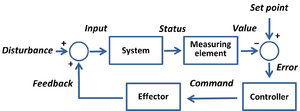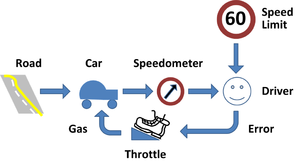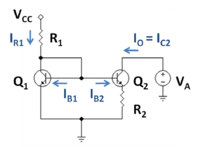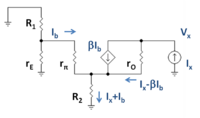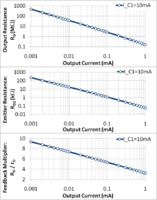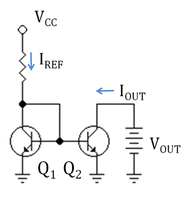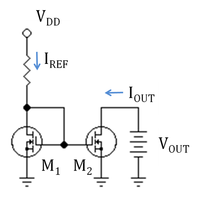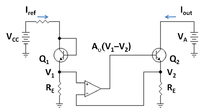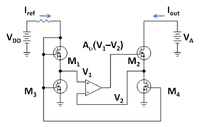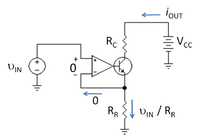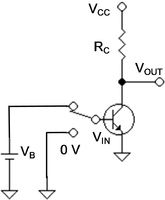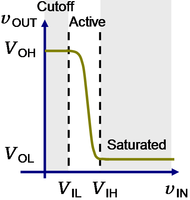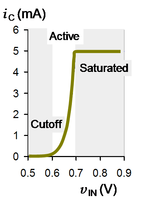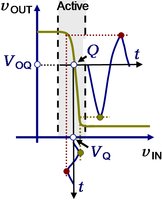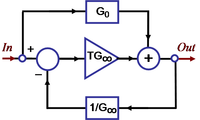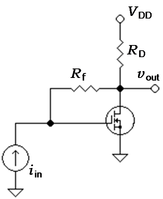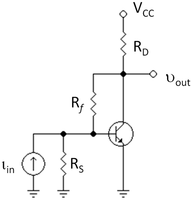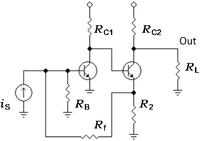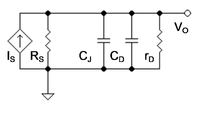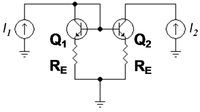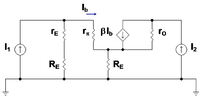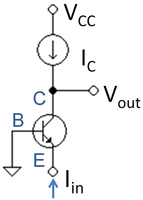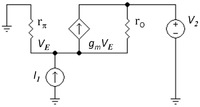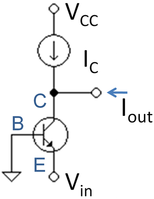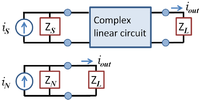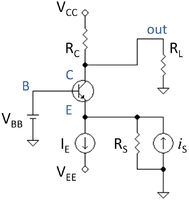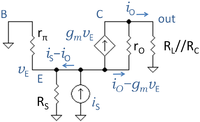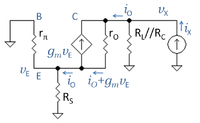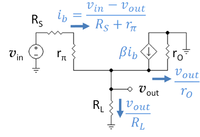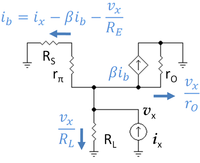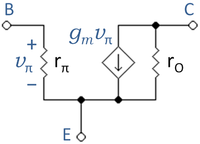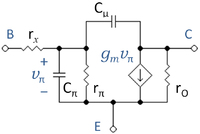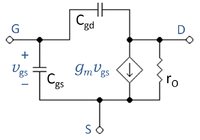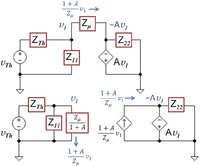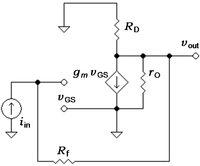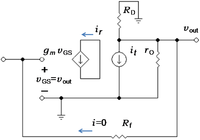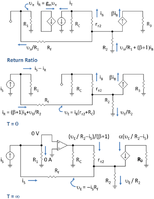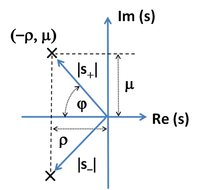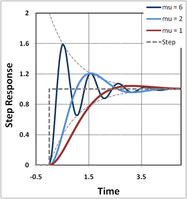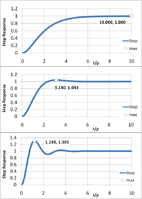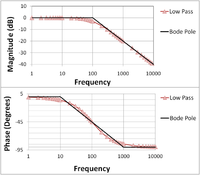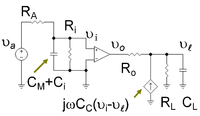User:John R. Brews/Circuits: Difference between revisions
Jump to navigation
Jump to search
imported>John R. Brews (Created page with "==Circuits== {{Gallery-mixed |caption=Current sources |width=200 |lines=5 |Widlar Current Source.PNG|Widlar current source using bipolar transistors |Widlar small-signal.PNG|Smal...") |
No edit summary |
||
| (6 intermediate revisions by one other user not shown) | |||
| Line 1: | Line 1: | ||
{{AccountNotLive}} | |||
==Circuits== | ==Circuits== | ||
{{TOC|right}} | |||
===Miscellaneous=== | |||
{{Gallery-mixed | |||
|caption=Miscellaneous | |||
|width=300 | |||
|lines=5 | |||
|Thermostat system.png|Thermostatic control of house temperature | |||
|Homeostasis.png|Negative feedback as a model for homeostasis | |||
|Set-point control.png|Feedback control to set system status at a set point | |||
|Car feedback.png|Keeping a car at the speed limit using negative feedback | |||
}} | |||
===Current sources=== | |||
{{Gallery-mixed | {{Gallery-mixed | ||
|caption=Current sources | |caption=Current sources | ||
| Line 27: | Line 41: | ||
|Shunt-series feedback amplifier.PNG|Two-transistor feedback amplifier; any source impedance ''R<sub>S</sub>'' is lumped in with the base resistor ''R<sub>B</sub>''. | |Shunt-series feedback amplifier.PNG|Two-transistor feedback amplifier; any source impedance ''R<sub>S</sub>'' is lumped in with the base resistor ''R<sub>B</sub>''. | ||
}} | }} | ||
===Small-signal circuits=== | |||
{{Gallery-mixed | {{Gallery-mixed | ||
|caption=Small-signal circuits | |caption=Small-signal circuits | ||
| Line 56: | Line 71: | ||
|Return ratio.PNG|Small-signal circuit with return path broken and test current ''i<sub>t</sub>'' driving amplifier at the break. | |Return ratio.PNG|Small-signal circuit with return path broken and test current ''i<sub>t</sub>'' driving amplifier at the break. | ||
|Using return ratio.PNG|Three small-signal schematics used to discuss the asymptotic gain model | |Using return ratio.PNG|Three small-signal schematics used to discuss the asymptotic gain model | ||
}} | |||
===Return ratio=== | |||
{{Gallery-mixed | |||
|caption=Return ratio | |||
|width=500 | |||
|lines=5 | |||
|Inserting source for return ratio.PNG|''Left'' - small-signal circuit corresponding to bipolar amplifier; ''Center'' - inserting independent source and marking leads to be cut; ''Right'' - cutting the dependent source free and short-circuiting broken leads. | |||
}} | |||
===Amplifiers=== | |||
{{Gallery-mixed | |||
|caption=Amplifiers | |||
|width=200 | |||
|lines=5 | |||
|Aspects of step response.PNG|Some terms used to describe step response in time domain. | |||
|Negative feedback amplifier.PNG|Ideal negative feedback model; open loop gain is ''A''<sub>OL</sub> and feedback factor is β. | |||
|Conjugate poles.PNG|Conjugate pole locations for step response of two-pole feedback amplifier. | |||
|Step response of negative feedback amplifier.PNG| Step-response of a linear two-pole feedback amplifier. | |||
|Overshoot control.PNG|Step response for three values of time constant ratio. | |||
|Gain Bode plot for two-pole amplifier.PNG|Bode gain plot to find phase margin of two-pole amplifier. | |||
|High-pass amplifier Bode plot.PNG|The Bode plot for a first-order (one-pole) [[highpass filter]] | |||
|Low-pass amplifier Bode plot.PNG|The Bode plot for a first-order (one-pole) [[lowpass filter]] | |||
|Bode plot for pole and zero.PNG| Bode magnitude plot for zero and for low-pass pole | |||
|Bode phase plot for pole and zero.PNG|Bode phase plot for zero and for low-pass pole | |||
|Superposed Bode plots for pole and zero.PNG|Bode magnitude plot for pole-zero combination; the location of the zero is ten times higher than in above figures | |||
|Superposed Bode phase plots for pole and zero.PNG|Bode phase plot for pole-zero combination; the location of the zero is ten times higher than in above figures | |||
|Open and closed loop gain.PNG|Gain of feedback amplifier ''A''<sub>FB</sub> in dB and corresponding open-loop amplifier ''A''<sub>OL</sub>. | |||
|Open and closed loop phase.PNG|Phase of feedback amplifier ''°A''<sub>FB</sub> in degrees and corresponding open-loop amplifier ''°A''<sub>OL</sub>. | |||
|Gain margin.PNG|Gain of feedback amplifier ''A''<sub>FB</sub> in dB and corresponding open-loop amplifier ''A''<sub>OL</sub>. | |||
|Phase margin.PNG|Phase of feedback amplifier ''A''<sub>FB</sub> in degrees and corresponding open-loop amplifier ''A''<sub>OL</sub>. | |||
|Pole splitting example.PNG| Operational amplifier with compensation capacitor ''C<sub>C</sub>'' between input and output to cause pole splitting. | |||
|Pole splitting with Miller transformation.PNG|Operational amplifier with compensation capacitor transformed using [[Miller effect|Miller's theorem]] to replace the compensation capacitor with a Miller capacitor at the input and a frequency-dependent current source at the output. | |||
|Two-pole Bode magnitude plot.PNG|Idealized [[Bode plot]] for a two pole amplifier design. | |||
|Compensation capacitance.PNG|Miller capacitance at low frequencies ''C<sub>M</sub>'' (top) and compensation capacitor ''C<sub>C</sub>'' (bottom) as a function of gain | |||
}} | }} | ||
Latest revision as of 03:07, 22 November 2023
The account of this former contributor was not re-activated after the server upgrade of March 2022.
Circuits
Miscellaneous
| Miscellaneous | |||||||||||||||||||||||||||||
| |||||||||||||||||||||||||||||
Current sources
| Current sources | ||||||||||||||||||||||||||||||||||||||||||||||||||||||||||||||||||
| ||||||||||||||||||||||||||||||||||||||||||||||||||||||||||||||||||
Small-signal circuits
| Small-signal circuits | |||||||||||||||||||||||||||||||||||||||||||||||||||||||||||||||||||||||||||
| |||||||||||||||||||||||||||||||||||||||||||||||||||||||||||||||||||||||||||
Return ratio
| Return ratio | |||||||||||||||||||||||||||||
| |||||||||||||||||||||||||||||
Amplifiers
| Amplifiers | ||||||||||||||||||||||||||||||||||||||||||||||||||||||||||||
| ||||||||||||||||||||||||||||||||||||||||||||||||||||||||||||


